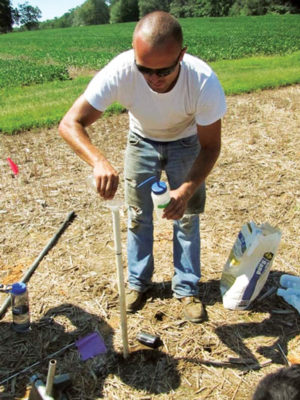No-Till Farmer
Get full access NOW to the most comprehensive, powerful and easy-to-use online resource for no-tillage practices. Just one good idea will pay for your subscription hundreds of times over.

Most no-tillers perform various types of soil sampling on prescribed schedules to gain insight into myriad soil health performance indicators, including nutrient and mineral content, as well as soil organic matter.
But soil samples are rarely taken below about 12 inches in depth, so that’s only providing a snapshot of the available nutrients in the topsoil, says University of Maryland soil scientist Ray Weil.
To gain a better understanding of what your soil can do for you, Weil says growers need to consider the whole soil profile, which may be 5-6 feet deep. Although Weil doesn’t expect farmers to be taking soil samples down to those depths, it’s useful to gain an understanding of the available nutrients deeper in the soil profile.
One recent study conducted by Weil measured the amount of active carbon in the soil on corn silage fields with no cover crops versus a cover crop of radish. Examining the soil to a depth of 1 meter — about 3½ feet — Weil found that the nitrogen (N) sidedressed corn, combined with a fall cover crop of radishes, increased the amount of root exudates that were contributing to the active carbon in the upper 3 feet.
…